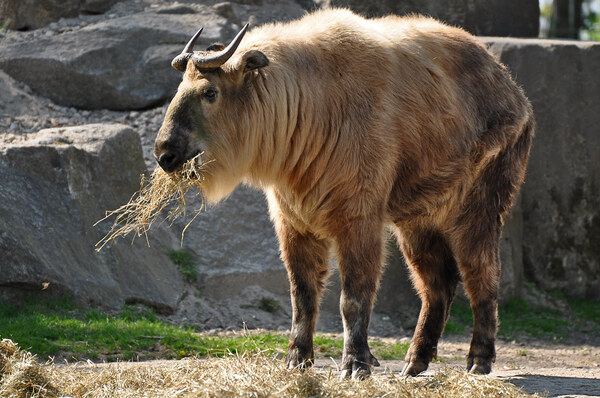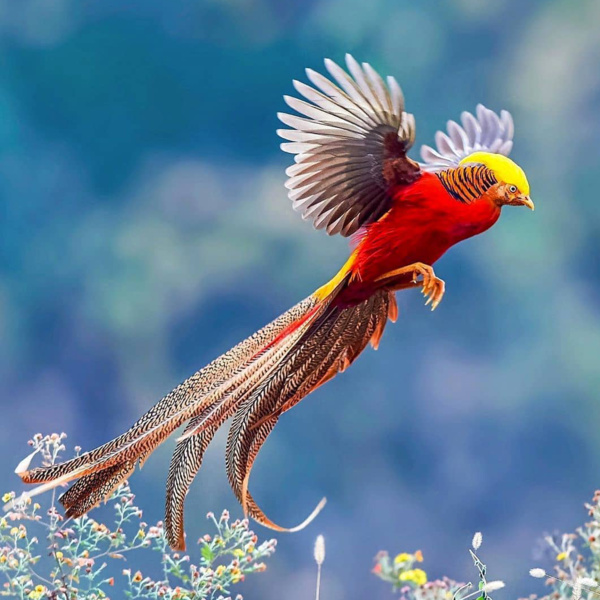China's vast landscapes, ranging from mountains to deserts and forests, support an extraordinary variety of wildlife. Below, we delve deeper into specific categories of animals, their populations, and China's significance in global biodiversity.
China is home to about 550 mammal species, ranking it among the most diverse mammal populations worldwide. Notable examples include:
Giant Panda: Approximately 1,800 remain in the wild.
Snow Leopard: An estimated 4,000 to 6,500 exist in the wild.
Sika Deer: Around 1 million are found across eastern Asia.
With more than 1,300 species, China is a crucial stopover for migratory birds along the East Asia-Australasia Flyway. Key species include:
Red-Crowned Crane: Estimated 2,000 in the wild, primarily in eastern China.
Chinese Crested Tit: An endemic species, mainly found in the forests of central and southwestern China.
China's diverse habitats support about 600 reptile species and over 400 amphibian species. Highlights include:
Chinese Alligator: Fewer than 150 individuals left in the wild.
Chinese Giant Salamander: The world’s largest amphibian, critically endangered with a population decline due to habitat loss and overharvesting.
China boasts around 3,000 fish species, many endemic to its freshwater systems. Noteworthy species include:
Yangtze Giant Softshell Turtle: Only a handful are believed to exist today.
Mandarin Fish: Known for its striking colors, it thrives in river habitats.
With estimates of over 1 million insect species, many remain undescribed. This includes:
Butterflies: More than 3,000 species, making China a key area for butterfly diversity.
Honeybees: Critical for pollination, they support agricultural ecosystems.
Globally, China ranks third or fourth in terms of overall biodiversity. This is primarily due to its large geographical area, varied climates, and diverse ecosystems, which provide numerous niches for different species. Key points include:
Ecosystem Types: China features various ecosystems, including temperate forests, tropical rainforests, deserts, and wetlands, each hosting unique wildlife.
Endemism: Approximately 30% of China's species are endemic, meaning they are not found elsewhere in the world, such as the Chinese Golden Pheasant.

The giant panda is perhaps the most iconic endemic species. These gentle bears primarily inhabit the bamboo forests of Sichuan Province.

Found in the mountainous regions of central and southwestern China, this monkey is known for its striking golden fur and distinctive flat face.

This small species of alligator is native to the Yangtze River basin and is critically endangered, with a population dwindling due to habitat loss.

One of the rarest turtles in the world, it is found only in parts of China and is critically endangered, with only a few individuals believed to exist.

This seabird is found primarily on the coasts of China and is known for its striking appearance and critically low population.

This large herbivore resides in the mountainous forests of Sichuan and is known for its unique appearance, combining features of both goats and cattle.

This small wildcat is found in the high-altitude regions of the Tibetan Plateau and is considered vulnerable due to habitat loss.

This colorful bird is native to the forests of central China and is often recognized for its vibrant plumage.

While domesticated, the wild Bactrian camel, found in the deserts of northern China, is an endangered species adapted to arid environments.

Though pangolins are found in several countries, the Chinese pangolin is endemic to China and faces severe threats from illegal wildlife trade.
These species highlight China's unique biodiversity and the importance of conservation efforts to protect them.
Despite its rich biodiversity, China faces significant conservation challenges:
Habitat Loss: Rapid urbanization, agriculture, and infrastructure development threaten natural habitats.
Poaching and Illegal Wildlife Trade: Many species, like the South China tiger and pangolins, face severe threats from poaching.
Pollution: Industrialization has led to habitat degradation and pollution, particularly affecting aquatic life.
In response to these challenges, China has implemented various conservation strategies:
Protected Areas: Over 2,700 nature reserves cover approximately 18% of China’s land area.
Legislation: The Wildlife Protection Law and other regulations aim to curb poaching and habitat destruction.
Community Involvement: Local communities are increasingly engaged in conservation efforts, promoting sustainable practices and ecotourism.
China's wildlife is a treasure trove of biodiversity that plays a crucial role in the health of global ecosystems. Continued efforts in conservation, research, and education are essential to preserve this rich natural heritage for future generations. By protecting these species and their habitats, we can ensure that China's wildlife remains vibrant and diverse.
animal tags: Giant-Panda
We created this article in conjunction with AI technology, then made sure it was fact-checked and edited by a Animals Top editor.